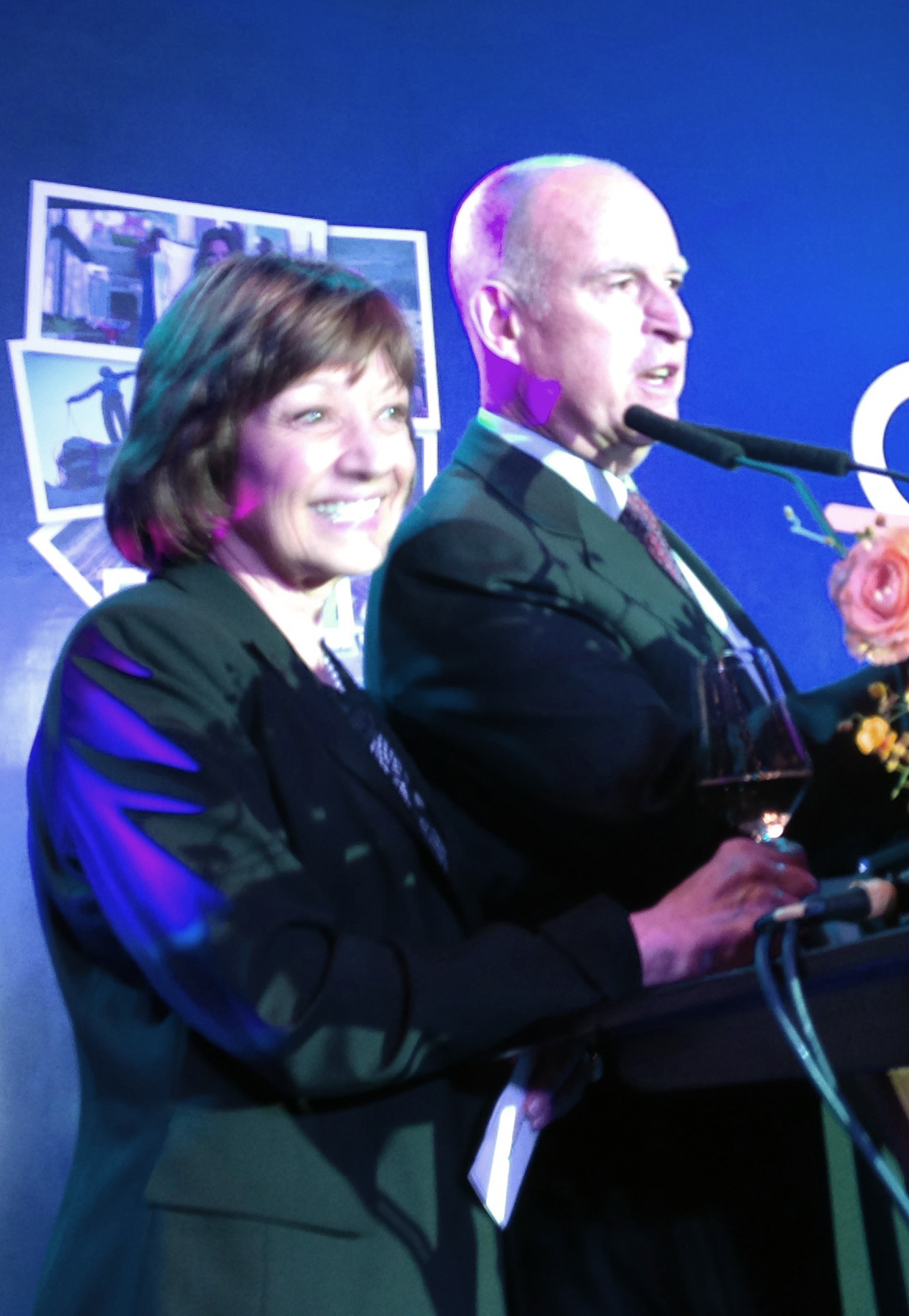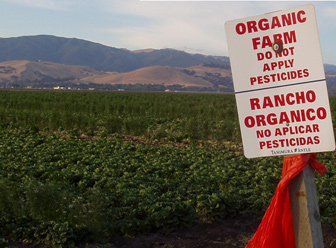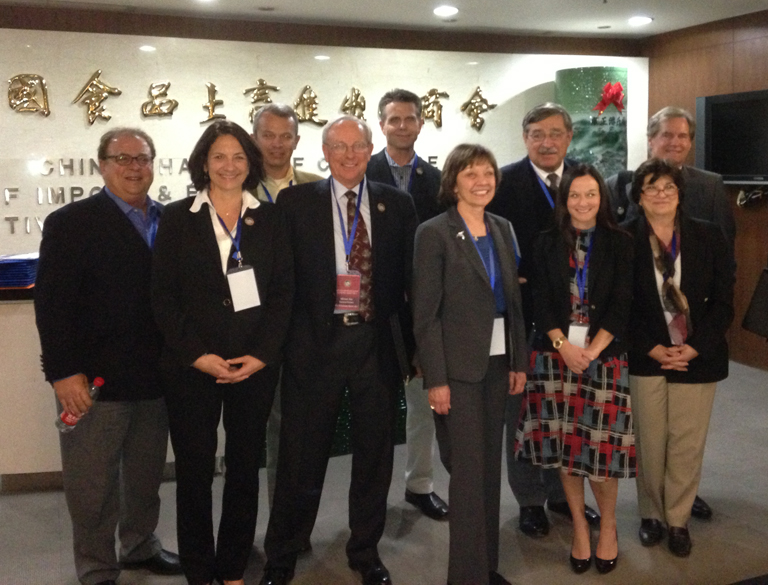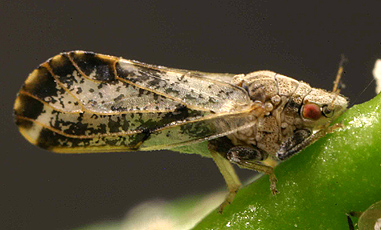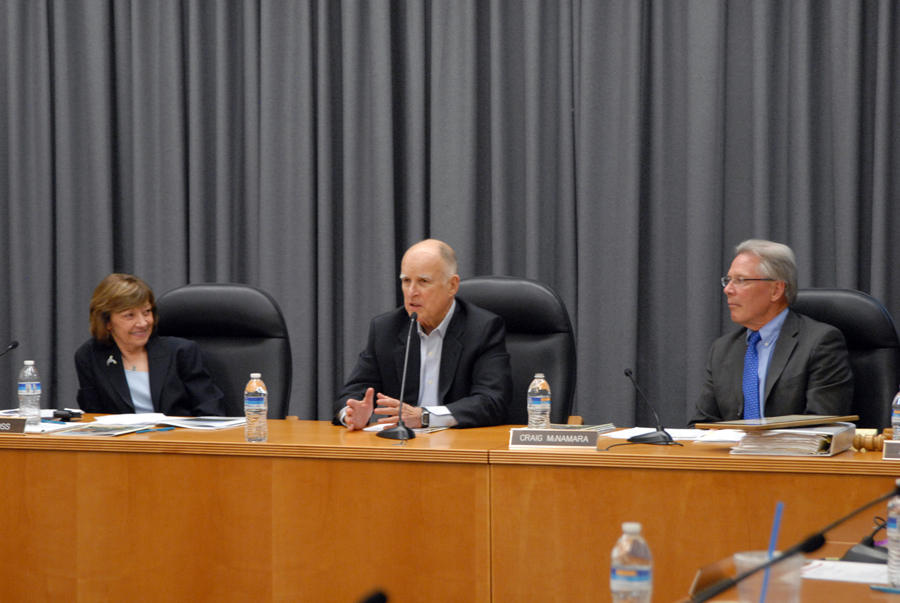Guangzhou was the perfect end to our trade mission to China. This vibrant city of 12.5 million in the Pearl River Delta exhibits a unique character that is full of energy and committed to business and economic development.
We visited the Jiangnan Fruit and Vegetable Wholesale Market , which is the largest wholesale market for produce in not only China, but all of Southeast Asia – 80 percent of all imported fruits and vegetables pass through this market. Thailand and Chile are the top foreign importers, followed closely by U.S. products. During our visit we had a great opportunity to see California crops from the Central Valley and a diversity of products from the around the globe.
We also had the opportunity to visit with a number of media outlets that focus on food and lifestyle stories. California cuisine is of great interest to our media friends because of the flavors, high-quality ingredients, and culture that the Golden State represents. Working with local representatives of California agricultural boards and commissions, we were able to bring a “Taste of California” to Guangzhou and it was truly experience that the media enjoyed.
As we left China, we heard some thoughts and impressions from some of participants traveling with us on Governor Brown’s trade mission:
John Weisz, Driscoll’s, “The meeting with the State Forestry Administration stood out as the example of the importance of this type of mission – providing access to national officials and support in moving the needle on key issues.”
Chris Rosander, Raisin Administrative Committee, “The speed of development and growth of the middle class really stood out for me- an incredible opportunity to sell raisins”
Melissa Poole, Paramount Farming/Roll Global, “This was a fascinating experience – the difference in between regions, the aesthetics and culture. I learned about the challenges and opportunities within this market.”
Michael Rue, Rue & Forsman “I was surprised by the amount of infrastructure on one hand and the lack of infrastructure on the other. When you see this 300 million-person middle class – you see what this really means for the agricultural sector.”
David Ahlem, Hilmar Cheese Company, “Every time I come to Asia the opportunity strikes me – the vastness, the size of this opportunity. The brand equity we have in California products and lifestyle, the ability to leverage this along with our strength and reputation in food safety is critical. The importance of knowing your customers and the differences between the regional markets also stood out.”
John Harris, Harris Farms, “The enormity of wealth and new construction – dedication to high end growth. We have problems with some products like beef, but for others there seems to be strong and genuine consumer demand. American/California food is a brand and desired by Chinese consumers. Encouraging market.”
This trip showed us once again the promise and the possibilities of the China market. As I told the trade delegation during our trip, working in this market requires patience and a long term strategy for building relationships. In China it is called “guanxi.” The Governor’s mission was an important step in the process
Agricultural trade is vital to California. I look forward to working with California’s farmers and ranchers to expand our exports and introduce new products to foreign markets.




